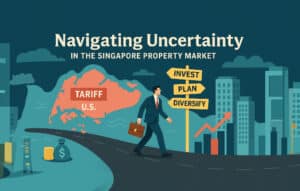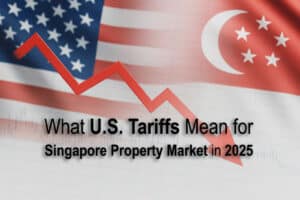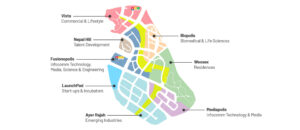Singapore, a nation known for its limited land and heavy reliance on food imports, is pushing forward with bold strategies to strengthen its food security. One of its key initiatives is the “30 by 30” vision — a national goal to produce 30% of the country’s nutritional needs locally by 2030. Central to this strategy is the rise of food factories — purpose-built industrial units that facilitate efficient, large-scale food production and processing. These facilities transform how food is manufactured, packaged, and delivered across the island.
This article explores what food factories are, the types of industrial zoning in Singapore (B1 and B2), how food factories fit into these categories, and how the growing cluster of such developments — particularly in Mandai — aligns with Singapore’s vision for food sustainability.
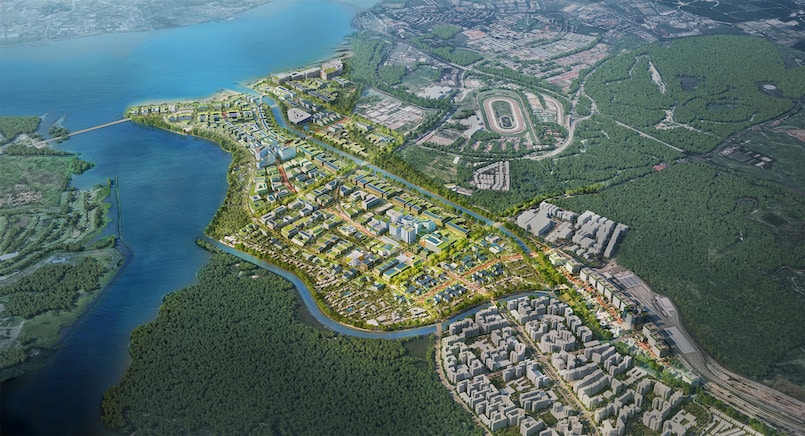
What is a Food Factory?
A food factory is a specialized facility designed for producing, processing, and packaging food products in compliance with strict hygiene and safety standards. These units have essential infrastructure such as cold storage provisions, grease traps, waste disposal systems, high-capacity exhaust systems, and efficient loading/unloading access.
In Singapore, food factories must be licensed by the Singapore Food Agency (SFA), and operations within these facilities are expected to adhere to Good Manufacturing Practices (GMP) and, in many cases, implement Hazard Analysis and Critical Control Point (HACCP) systems.
Understanding Industrial Zoning: B1 vs B2
Singapore categorizes industrial land under two main zoning types — B1 and B2:
- B1 (Business 1): Meant for light and clean industries such as electronics assembly, software development, and some food processing operations with minimal environmental impact. These facilities typically have lower noise, odour, or emissions and are often located closer to residential areas.
- B2 (Business 2): Zoned for heavier industries, including general manufacturing, engineering works, and food factories that require more space and involve processes that might produce stronger emissions, noise, or waste management systems. These zones are typically further from residential areas.
Most food factories in Singapore fall under the B2 category due to the operational intensity and infrastructure required. However, lighter operations with low emission profiles may sometimes be approved in B1 zones subject to specific criteria.
Why Food Factories Are Essential to Food Sustainability
Singapore imports over 90% of its food. This dependency makes the country vulnerable to global supply chain disruptions and price volatility. Food factories serve as a strategic buffer by:
- Increasing Local Production: They help local producers scale operations efficiently and consistently.
- Innovating Processes: With controlled environments, manufacturers can integrate automation, robotics, and AI to optimize yields and reduce waste.
- Enabling Supply Chain Resilience: By reducing its reliance on imported processed foods, Singapore is building a more secure domestic food ecosystem.
Key Food Factory Developments in Mandai
Mandai is rapidly shaping up to be Singapore’s food manufacturing hub. Its proximity to the upcoming Sungei Kadut Eco-District and Agri-Food Innovation Park makes it a strategic location for food-related industries. Here are notable developments:
- Smart Food @ Mandai
Located at 10 Mandai Estate, this 10-storey freehold food factory offers modular designs, high ceilings, and integrated provisions for cold rooms. The facility includes ramp-up access and is tailored for businesses seeking flexible and efficient production space. Its design allows seamless adaptation for various food sectors, including central kitchens and frozen food processing.
- Food Vision @ Mandai
Situated at 19 Mandai Estate, this development comprises 114 strata-titled freehold units over 10 storeys. Each unit is thoughtfully equipped with essential infrastructure such as high-powered exhaust systems, waste chutes, and service lifts. Its strategic location and efficient design suit various food businesses, from SMEs to scaling producers.
- FoodFab@Mandai
At 7 Mandai Estate, FoodFab is a modern freehold B2 industrial development tailored specifically for food manufacturing. The facility has 47 functional units and 20-footer ramp-up access, ample parking, and robust technical specifications to support semi-heavy industrial use.
- CT Food Nex
Planned at 2A and 2B Mandai Estate, CT Food Nex is a 10-storey general industrial food factory project with 109 strata units and a dedicated canteen. The development features 40-foot container access, heavy-duty floor loading, and efficient lift systems to support logistics-intensive operations. Its location offers excellent connectivity and convenience for food operators.
- Mandai Foodlink
Completed in 2017 and located at 5 Mandai Link, Mandai Foodlink is a seven-storey facility offering 87 well-equipped units. Features include centralized grease traps, cold room provisions, and well-planned refuse management systems. This development has already become a hub for many established food manufacturers.
- EcoFood (Upcoming)
EcoFood is a highly anticipated freehold food factory development featured on PropertyNet.sg. Designed to meet future demands, it incorporates eco-friendly features and state-of-the-art specifications. Strategically located in Mandai, it aims to attract forward-looking food businesses who want to be part of Singapore’s food resilience roadmap. More details will emerge as the development progresses.
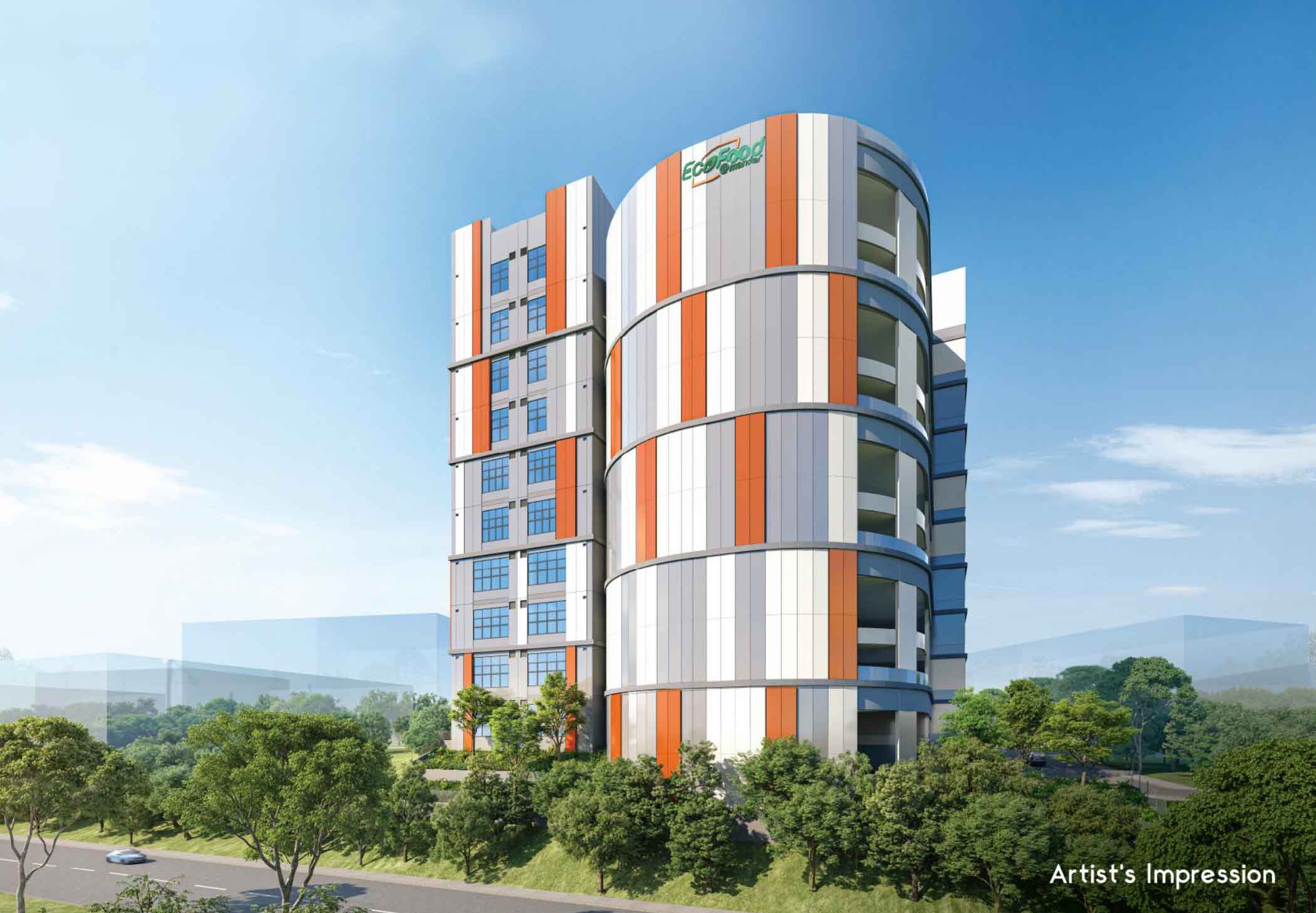
Mandai’s Role in Singapore’s Food Security Vision
The concentration of food factories in Mandai is no coincidence. The area is located near the Agri-Food Innovation Park — a 18-hectare precinct in Sungei Kadut that will host high-tech farming and research facilities. Being close to R&D and agri-tech companies creates opportunities for synergies between upstream farming and downstream processing.
This industrial clustering supports Singapore’s efforts in:
- Vertical Integration: Sourcing, processing, and distribution within a single ecosystem.
- Innovation Collaboration: Linking food producers with tech start-ups and research institutions.
- Sustainability Practices: Encouraging circular food systems that reduce food waste and carbon footprint.
Government Support and Regulation
The Singapore Food Agency (SFA) and Enterprise Singapore actively support the growth of food factories through:
- Grants like 30×30 Express: To help farms and food factories scale up quickly.
- Productivity Solutions Grant (PSG): To assist with adoption of automation and digital solutions.
- Food Safety Regulations: Ensuring all food produced meets strict safety and quality standards.
Developers and businesses must ensure compliance with licensing, waste management, and operational guidelines — a key factor for long-term sustainability.
Conclusion: The Future of Food Factories in Singapore
As Singapore navigates the challenges of climate change, global supply chain risks, and land constraints, food factories provide a powerful solution to strengthen local food production and supply chain resilience. Developments like those in Mandai contribute to the economy and play a pivotal role in achieving national food sustainability goals.
As Singaporeans, we’ve always played a part in writing our nation’s story together — individual efforts can go a long way in helping to support our local heroes. Here are some steps you can take to write the next chapter in Singapore’s food story:
- Go for Local Produce
The next time you’re at the supermarket or shopping for groceries online, look for the SG Fresh Produce logo. This logo will help you identify eggs, fish, and vegetables that have been proudly nurtured in Singapore. Because it’s grown on our soil, local produce travels a shorter distance to reach you, making it fresher and great for the environment by reducing carbon emissions. - Invest in Singapore’s Food Factories
You can also contribute to Singapore’s food story by investing in food factory developments, such as those in Mandai. These facilities are at the heart of the nation’s push for food security and sustainability, offering businesses and individuals opportunities to contribute to a resilient food ecosystem while supporting local innovation and growth.
By investing in modern, efficient, and sustainable food manufacturing infrastructure — whether through supporting local produce or exploring investment opportunities in food factories — Singapore is laying the groundwork for a more secure and self-reliant future. Together, we can ensure that the next chapter of Singapore’s food story is resilient, innovative, and sustainable.
Visit PropertyNet.Sg for more information on the latest food factory projects and their alignment with investment and operational needs.
🚀 Stay Ahead in the Property Market!
Be the first to receive exclusive updates, launch reviews, insider deals, and real-time alerts — directly on your preferred app.
👉 Join our community now:
🌐 Spread Knowledge. Share with Others.
Click any of the icons below to share this content with those who may benefit from it.



